MaryAnn Bernal's Blog, page 243
September 1, 2014
Facebook Event - Book launch Fractured Vows: Brooklyn and Bo Chronicles (Book Three) - September 5, 2014 11-12pm PDT

https://www.facebook.com/events/380878058735532/
Saturday, September 511-12:00pm in PDT
More Brooklyn & Bo Chronicles!
Book three is the first book in the trilogy from a guys perspective. Find out why Brooklyn fell in love with Bo.
...
When love comes with a price...
What happens once a vengeful ex just won’t let go? Bo and Brooklyn’s worlds are turned upside down as they find themselves facing insanity in the form of an angry woman who loses all reason when she tries to destroy them. Will Ruth give up or will she succeed in ending the relationship between her former husband and his new love?

Published on September 01, 2014 05:01
History Trivia - Lady Anne Boleyn made Marchioness of Pembroke
Sept 1
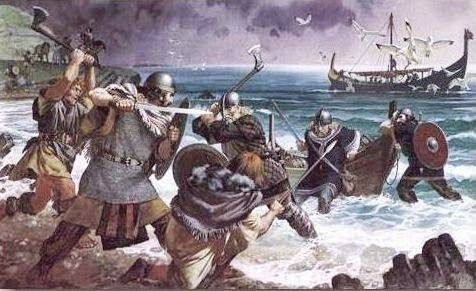
891 Northmen defeated near Louvaine, France.

1339 The Hundred Years' War officially began when King Edward III of England declared war on France.
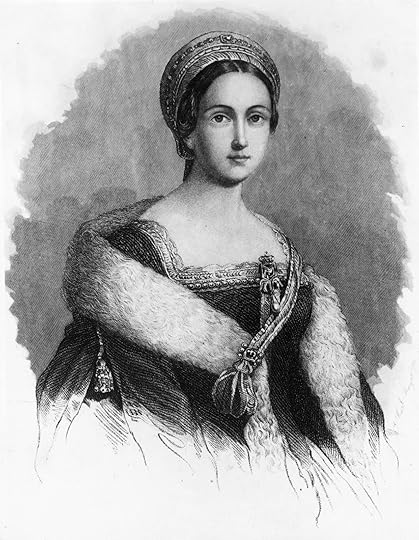 1532 Lady Anne Boleyn was made Marchioness of Pembroke by her future husband, King Henry VIII of England.
1532 Lady Anne Boleyn was made Marchioness of Pembroke by her future husband, King Henry VIII of England.


891 Northmen defeated near Louvaine, France.

1339 The Hundred Years' War officially began when King Edward III of England declared war on France.
 1532 Lady Anne Boleyn was made Marchioness of Pembroke by her future husband, King Henry VIII of England.
1532 Lady Anne Boleyn was made Marchioness of Pembroke by her future husband, King Henry VIII of England.
Published on September 01, 2014 05:00
August 31, 2014
Ancient Arabian Stones Hint at How Humans Migrated Out of Africa
By Charles Q. Choi
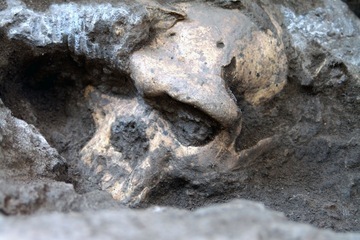
 A 1.8-million-year-old skull that was discovered in Dmanisi, Georgia. In a study published in October 2013 in the journal Science, researchers suggested modern humans may have dispersed out of Africa in more than one wave of migration.
A 1.8-million-year-old skull that was discovered in Dmanisi, Georgia. In a study published in October 2013 in the journal Science, researchers suggested modern humans may have dispersed out of Africa in more than one wave of migration.
Credit: Photo courtesy of Georgian National Museum
Ancient stone artifacts recently excavated from Saudi Arabia possess similarities to items of about the same age in Africa — a discovery that could provide clues to how humans dispersed out of Africa, researchers say.
 Modern humans originated about 200,000 years ago in Africa. However, scientists have long debated when and how the modern human lineage spread out of Africa.
Modern humans originated about 200,000 years ago in Africa. However, scientists have long debated when and how the modern human lineage spread out of Africa.
"Understanding how we originated and colonized the world remains one of the most fascinating and enduring questions, because it is our story as humans," said lead study author Eleanor Scerri, an archaeologist at the University of Bordeaux in France.
Previous research had suggested that the exodus from Africa started between 70,000 and 40,000 years ago. However, a genetic analysis reported in April hinted that modern humans might have begun their march across the globe as early as 130,000 years ago, and continued their expansion out of Africa in multiple waves.
In addition, stone artifacts recently unearthed in the Arabian Desert date to at least 100,000 years ago. This could be evidence of an early modern-human exodus out of Africa, scientists say. However, it's possible that these artifacts weren't created by modern humans; a number of now-extinct human lineages existed outside Africa before or at the same time when modern humans migrated there. For instance, the Neanderthals, the closest known extinct relatives of modern humans, lived in both Europe and Asia around that time. [See Images of Our Closest Human Ancestor]
To help shed light on the role the Arabian Peninsula might have played in the history of modern humans, scientists compared stone artifacts recently excavated from three sites in the Jubbah lake basin in northern Saudi Arabia with items from northeast Africa excavated in the 1960s. Both sets of artifacts were 70,000 to 125,000 years old. Back then, the areas that are now the Arabian and Sahara deserts were far more hospitable places to live than they are now, which could have made it easier for modern humans and related lineages to migrate out of Africa.
"Far from being a desert, the Arabian Peninsula between 130,000 and 75,000 years ago was a patchwork of grasslands and savanna environments, featuring extensive river networks running through the interior," Scerri said.
The northeast African stone tools the researchers analyzed were similar to ones previously found near modern-human skeletons. The scientists found that stone artifacts at two of the three Arabian sites were "extremely similar" to the northeast African stone tools, Scerri told Live Science. At the very least, Scerri said, this finding suggests that there was some level of interaction between the groups in Africa and those in the Arabian Peninsula, and might hint that these Arabian tools were made by modern humans.
Surprisingly, Scerri said, tools from the third Arabian site the researchers analyzed were "completely different." "This shows that there was a number of different tool-making traditions in northern Arabia during this time, often in very close proximity to each other," she said.
One possible explanation for these differences is that the artifacts were made by different human lineages. Future research needs to uncover skeletal remains with ancient tools unearthed from the Arabian Peninsula to help solve this mystery, Scerri noted. Unless skeletal remains are found near such artifacts, it will remain uncertain whether modern humans or a different human lineage might have made them.
"It seems likely that there were multiple dispersals into the Arabian Peninsula from Africa, some possibly very early in the history of Homo sapiens," Scerri said. "It also seems likely that there may have been multiple dispersals into this region from other parts of Eurasia. These features are what make the Arabian Peninsula so interesting."
Ancient migrants out of Africa and from Eurasia might have encountered a number of different populations in the Arabian Peninsula, Scerri said. Some of these groups may have adapted to their environment more than others had, which raises the intriguing question: "Did the exchange of genes and knowledge between such groups contribute to our ultimate success as a species?" Scerri said.
The scientists detailed their findings online Aug. 8 in the Journal of Human Evolution.
http://www.livescience.com/47555-stone-artifacts-human-migration.html

 A 1.8-million-year-old skull that was discovered in Dmanisi, Georgia. In a study published in October 2013 in the journal Science, researchers suggested modern humans may have dispersed out of Africa in more than one wave of migration.
A 1.8-million-year-old skull that was discovered in Dmanisi, Georgia. In a study published in October 2013 in the journal Science, researchers suggested modern humans may have dispersed out of Africa in more than one wave of migration.Credit: Photo courtesy of Georgian National Museum
Ancient stone artifacts recently excavated from Saudi Arabia possess similarities to items of about the same age in Africa — a discovery that could provide clues to how humans dispersed out of Africa, researchers say.
 Modern humans originated about 200,000 years ago in Africa. However, scientists have long debated when and how the modern human lineage spread out of Africa.
Modern humans originated about 200,000 years ago in Africa. However, scientists have long debated when and how the modern human lineage spread out of Africa."Understanding how we originated and colonized the world remains one of the most fascinating and enduring questions, because it is our story as humans," said lead study author Eleanor Scerri, an archaeologist at the University of Bordeaux in France.
Previous research had suggested that the exodus from Africa started between 70,000 and 40,000 years ago. However, a genetic analysis reported in April hinted that modern humans might have begun their march across the globe as early as 130,000 years ago, and continued their expansion out of Africa in multiple waves.
In addition, stone artifacts recently unearthed in the Arabian Desert date to at least 100,000 years ago. This could be evidence of an early modern-human exodus out of Africa, scientists say. However, it's possible that these artifacts weren't created by modern humans; a number of now-extinct human lineages existed outside Africa before or at the same time when modern humans migrated there. For instance, the Neanderthals, the closest known extinct relatives of modern humans, lived in both Europe and Asia around that time. [See Images of Our Closest Human Ancestor]
To help shed light on the role the Arabian Peninsula might have played in the history of modern humans, scientists compared stone artifacts recently excavated from three sites in the Jubbah lake basin in northern Saudi Arabia with items from northeast Africa excavated in the 1960s. Both sets of artifacts were 70,000 to 125,000 years old. Back then, the areas that are now the Arabian and Sahara deserts were far more hospitable places to live than they are now, which could have made it easier for modern humans and related lineages to migrate out of Africa.
"Far from being a desert, the Arabian Peninsula between 130,000 and 75,000 years ago was a patchwork of grasslands and savanna environments, featuring extensive river networks running through the interior," Scerri said.
The northeast African stone tools the researchers analyzed were similar to ones previously found near modern-human skeletons. The scientists found that stone artifacts at two of the three Arabian sites were "extremely similar" to the northeast African stone tools, Scerri told Live Science. At the very least, Scerri said, this finding suggests that there was some level of interaction between the groups in Africa and those in the Arabian Peninsula, and might hint that these Arabian tools were made by modern humans.
Surprisingly, Scerri said, tools from the third Arabian site the researchers analyzed were "completely different." "This shows that there was a number of different tool-making traditions in northern Arabia during this time, often in very close proximity to each other," she said.
One possible explanation for these differences is that the artifacts were made by different human lineages. Future research needs to uncover skeletal remains with ancient tools unearthed from the Arabian Peninsula to help solve this mystery, Scerri noted. Unless skeletal remains are found near such artifacts, it will remain uncertain whether modern humans or a different human lineage might have made them.
"It seems likely that there were multiple dispersals into the Arabian Peninsula from Africa, some possibly very early in the history of Homo sapiens," Scerri said. "It also seems likely that there may have been multiple dispersals into this region from other parts of Eurasia. These features are what make the Arabian Peninsula so interesting."
Ancient migrants out of Africa and from Eurasia might have encountered a number of different populations in the Arabian Peninsula, Scerri said. Some of these groups may have adapted to their environment more than others had, which raises the intriguing question: "Did the exchange of genes and knowledge between such groups contribute to our ultimate success as a species?" Scerri said.
The scientists detailed their findings online Aug. 8 in the Journal of Human Evolution.
http://www.livescience.com/47555-stone-artifacts-human-migration.html
Published on August 31, 2014 15:14
No Descendants Are Left from the First Eskimos
 This photos shows Qajaa, a grass-covered deep-frozen midden in West Greenland with remains from Early Paleo-Eskimo cultures.
This photos shows Qajaa, a grass-covered deep-frozen midden in West Greenland with remains from Early Paleo-Eskimo cultures.Credit: Claus Andreasen
By Charles Choi
Ancient human DNA is shedding light on the peopling of the Arctic region of the Americas, revealing that the first people there did not leave any genetic descendants in the New World, unlike previously thought.
In the largest study yet of ancient human DNA, the researchers suggest the first group of people in the New World Arctic may have lived in near-isolation for more than 4,000 years because of a mindset that eschewed adopting new ideas. It remains a mystery why they ultimately died off, they added.
The first people in the Arctic of the Americas may have arrived about 6,000 years ago, crossing the Bering Strait from Siberia. The area was the last region of the New World that humans populated due to its harsh and frigid nature.
But the details of how the New World Arctic was peopled remain a mystery because the region's vast size and remoteness make it difficult to conduct research there. For example, it was unclear whether the Inuit people living there today and the cultures that preceded them were genetically the same people, or independent groups.
The scientists analyzed DNA from bone, teeth and hair samples collected from the remains of 169 ancient humans from Arctic Siberia, Alaska, Canada and Greenland. They also sequenced the complete genomes of seven modern-day people from the region for comparison.
Previous research suggested people in the New World Arctic could be divided into two distinct groups — the Paleo-Eskimos, who showed up first, and the Neo-Eskimos, who got there nearly 4,000 years later. [In Photos: Life in the Arctic region of the Americas]
The early Paleo-Eskimo people include the Pre-Dorset and Saqqaq cultures, who mostly hunted reindeer and musk ox. When a particularly cold period began about 800 B.C., the Late Paleo-Eskimo people known as the Dorset culture emerged. The Dorset people had a more marine lifestyle, involving whaling and seal hunting. Their culture is divided into three phases, altogether lasting about 2,100 years.
"One may almost say kind of jokingly or informally that the Dorsets were the hobbits of the Eastern Arctic, a very strange and very conservative people that we are just now getting to know a little bit," said study co-author William Fitzhugh, an anthropologist at the Smithsonian Institution's National Museum of Natural History in Washington, D.C.
The Dorset culture ended sometime between 1150 and 1350 A.D., getting rapidly replaced after the sudden appearance of Neo-Eskimo whale-hunters known as the Thule culture. These newcomers from the Bering Strait region brought new technology from Asia, including complex weapons such as sinew-backed bows and more effective means of transportation such as dog sleds. The Thule "pioneered the hunting of large whales for the first time ever in, I guess, maybe anywhere in the world," Fitzhugh said.
Modern Inuit cultures emerged from the Thule during the decline of whaling near the end of the period known as the Little Ice Age, which lasted from the 16th to 19th century. This ultimately led the Inuit to adopt the hunting of walruses at the edges of ice packs and the hunting of seals at their breathing holes.
Previous studies hinted that some modern Native Americans, such as the Athabascans in northwestern North America, might be descended from the Paleo-Eskimos. However, these findings now quash that idea. "The results of this paper have a bearing not just on the peopling of the Arctic, but also the peopling of the Americas," lead study author Maanasa Raghavan, a molecular biologist at the University of Copenhagen's National Museum of Natural History in Denmark, told Live Science.
The new findings suggest the Paleo-Eskimos apparently survived in near-isolation for more than 4,000 years. The arrival of Paleo-Eskimos into the Americas was its own independent migration event, with Paleo-Eskimos genetically distinct from both the Neo-Eskimos and modern Native Americans.
"I was actually surprised that we don't find any evidence of mixture between Native Americans and Paleo-Eskimos,"
said study co-author Eske Willerslev, an evolutionary geneticist also at the University of Copenhagen's National Museum of Natural History. "In other studies, when we see people meeting each other, they might be fighting each other, but normally they actually also have sex with each other, but that doesn't seem to really have been the case here. They must have been coexisting for thousands of years, so at least from a genetic point of view, the lack of mixture between those two groups was a bit surprising."
The reason the Paleo-Eskimos may not have mixed with the Neo-Eskimos or the ancestors of modern Native Americans was "because they had such an entirely different mindset," Fitzhugh said. "Their religions were completely different, their resources and their technologies were different. When you have people who are so close to nature as the Paleo-Eskimos had to be to survive, they had to be extremely careful about maintaining good relationships with the animals, and that meant not polluting the relationship by introducing new ideas, new rituals, new materials and so forth."
The researchers did find evidence of gene flow between Paleo-Eskimos and Neo-Eskimos. However, this likely occurred before the groups migrated to the New World, back in Siberia, among the common ancestors of both lineages. The new evidence suggests that in the American Arctic, the two groups largely stayed separate.
In addition, while differences in the artifacts and architecture of the Pre-Dorset and Dorset had led previous studies to suggest they had different ancestral populations, these new findings suggest the Early and Late Paleo-Eskimos did share a common ancestral group. "The pre-Dorset people, the Dorset ancestors, seemed to have morphed into Dorset culture," Fitzhugh told Live Science.
One mystery these findings help solve is the origin of the Sadlermiut people, who survived until the beginning of the 20th century in the region near Canada's Hudson Bay, until the last of them perished from a disease introduced by whalers. The Sadlermiut avoided interaction with everyone outside their own society, and according to their Inuit neighbors, the Sadlermiut spoke a strange dialect, were bad at skills the Inuit considered vital, such as constructing igloos and tending oil lamps, were unclean, and did not observe standard Inuit taboos, all of which suggested that the Sadlermiut were descended from Paleo-Eskimos instead of Neo-Eskimos.
However, these new findings revealed the Sadlermiut showed evidence of only Inuit ancestry. Their cultural differences from other Inuit may have been the result of their isolation.
It remains a mystery why the Dorset people ultimately died off. Previous studies suggested the Dorset were absorbed by the expanding Thule population — and the Thule did adopt Dorset harpoon types, soapstone lamps and pots, and snow houses. However, these new findings do not find evidence of interbreeding between the groups.
One possibility is that the rise of the Thule represented "an example of prehistoric genocide," Fitzhugh said. "The lack of significant genetic mixing might make it appear so." However, Thule legends of the Dorset "tell only of friendly relations with a race of gentle giants," Fitzhugh added.
Another possibility is that diseases introduced by Vikings or the Thule may have triggered the collapse of the Dorset, Fitzhugh said. However, "if it's disease, then you'd expect to find dead bodies of Dorset people in their houses, and that's never been found," Fitzhugh said. [Fierce Fighters: 7 Secrets of Viking Seamen]
To help solve this and other remaining mysteries about the peopling of the New World Arctic, the researchers plan to look at more ancient human remains in both the Americas and Asia. The scientists detailed their findings in the Aug. 29 issue of the journal Science.
http://www.livescience.com/47604-first-american-arctic-people-genetics.html

Published on August 31, 2014 15:08
2,700-Year-Old Phoenician Shipwreck Discovered
by
Rossella Lorenzi
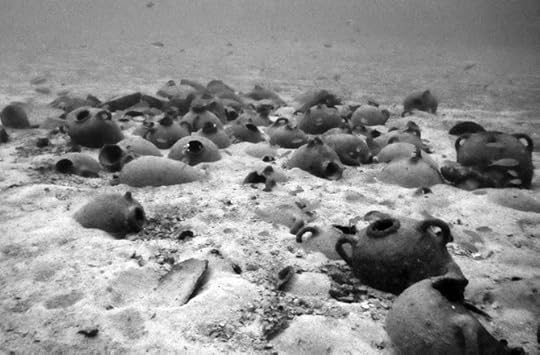
Part of the cargo of the sunken Phoenician ship. Credit: University of Malta/CNRS/COMEX
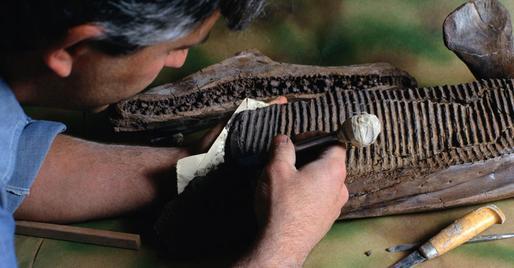
 GalleryAccidentalArchaeologicalDiscoveries:PhotosView Caption +#1: Sept. 12, 2011 -- In the search for buried history, archaeologists pour their resources into uncovering the remnants of the distant past. With know-how, persistence and a little luck, archaeologists can push aside dirt and rock and find an artifact of historical significance. Although chance plays a big role in unearthing history, archaeological treasures have been stumbled upon purely by accident, often by those outside the scientific community. In these photos, explore several particularly serendipitous finds of unique artifacts, some of which reach as far back as prehistory.
GalleryAccidentalArchaeologicalDiscoveries:PhotosView Caption +#1: Sept. 12, 2011 -- In the search for buried history, archaeologists pour their resources into uncovering the remnants of the distant past. With know-how, persistence and a little luck, archaeologists can push aside dirt and rock and find an artifact of historical significance. Although chance plays a big role in unearthing history, archaeological treasures have been stumbled upon purely by accident, often by those outside the scientific community. In these photos, explore several particularly serendipitous finds of unique artifacts, some of which reach as far back as prehistory.
Getty Images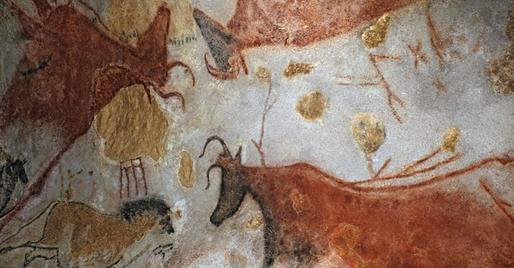 View Caption + On Sept. 12, 1940, four teenagers followed their wayward dog into a cave complex near the village of Montignac in southwestern France. To their surprise, the caves hosted something remarkable: nearly 2,000 paintings and etchings of animals, humans and abstract shapes on the walls dating back between 15,000 and 25,000 years. Known as the Lascaux caves, the complex features figures depicted in surprising detail given the age of the illustrations. Animals portrayed on the cave walls included horses, stags, bison and felines. Archaeologists believed the caves were used for ritualistic purposes. Some parts of the illustrations even appear to construct a narrative, but what they mean exactly has yet to be deciphered. The caves were open to the public in 1948, but closed in 1963 in order to preserve the site from damage.
View Caption + On Sept. 12, 1940, four teenagers followed their wayward dog into a cave complex near the village of Montignac in southwestern France. To their surprise, the caves hosted something remarkable: nearly 2,000 paintings and etchings of animals, humans and abstract shapes on the walls dating back between 15,000 and 25,000 years. Known as the Lascaux caves, the complex features figures depicted in surprising detail given the age of the illustrations. Animals portrayed on the cave walls included horses, stags, bison and felines. Archaeologists believed the caves were used for ritualistic purposes. Some parts of the illustrations even appear to construct a narrative, but what they mean exactly has yet to be deciphered. The caves were open to the public in 1948, but closed in 1963 in order to preserve the site from damage.
Corbis View Caption + The Dead Sea Scrolls are a collection of over 800 biblical texts made of animal skin and papyrus. Dating to around 2,000 years ago, between the years 200 B.C. and 70 A.D., the scrolls could well be the oldest such documents in existence and have deepened historians' understanding of religious history. These documents may have been lost to history had a Bedouin shepherd named Muhammed edh-Dhib and his cousin not stumbled upon the first manuscripts along the northern shore of the Dead Sea at a remote site known as Qumran in 1947. The last fragments of the Dead Sea Scrolls collection was uncovered in the mid-1950s. Although the scrolls have been extensively studied and translated, one big mystery remains: Who exactly wrote them?
View Caption + The Dead Sea Scrolls are a collection of over 800 biblical texts made of animal skin and papyrus. Dating to around 2,000 years ago, between the years 200 B.C. and 70 A.D., the scrolls could well be the oldest such documents in existence and have deepened historians' understanding of religious history. These documents may have been lost to history had a Bedouin shepherd named Muhammed edh-Dhib and his cousin not stumbled upon the first manuscripts along the northern shore of the Dead Sea at a remote site known as Qumran in 1947. The last fragments of the Dead Sea Scrolls collection was uncovered in the mid-1950s. Although the scrolls have been extensively studied and translated, one big mystery remains: Who exactly wrote them?
Corbis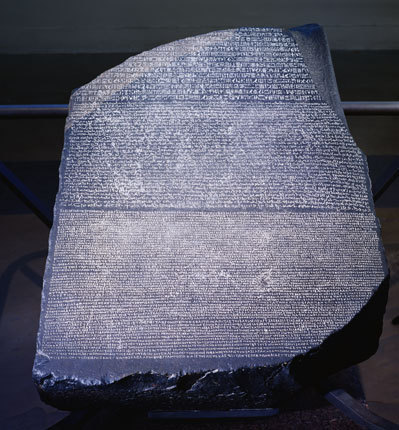 View Caption + As Napoleon Bonaparte's army marched through north Africa during his campaign in Egypt, they stumbled upon what would become known as the Rosetta Stone, after the town where it was discovered. Within Bonaparte's army was a squadron of scholars called Institute of Egypt, also known as the Scientific and Artistic Commission. As the military settled around the Nile Delta, the Institute explored local ruins and artifacts. After the discovery of the stone in 1799, several copies of the inscriptions on its face were made, since no one could read them at the time. By 1802, the Greek and Demotic portions of the stone had been deciphered by scholars. The hieroglyphics posed a different challenge all together, however, and it would take 20 years before French scholar Jean-François Champollion announced that he had cracked the code. By deciphering the hieroglyphs, Champollion opened a whole new door to understanding the civilization of ancient Egypt. The Rosetta Stone is currently kept in the British Museum.
View Caption + As Napoleon Bonaparte's army marched through north Africa during his campaign in Egypt, they stumbled upon what would become known as the Rosetta Stone, after the town where it was discovered. Within Bonaparte's army was a squadron of scholars called Institute of Egypt, also known as the Scientific and Artistic Commission. As the military settled around the Nile Delta, the Institute explored local ruins and artifacts. After the discovery of the stone in 1799, several copies of the inscriptions on its face were made, since no one could read them at the time. By 1802, the Greek and Demotic portions of the stone had been deciphered by scholars. The hieroglyphics posed a different challenge all together, however, and it would take 20 years before French scholar Jean-François Champollion announced that he had cracked the code. By deciphering the hieroglyphs, Champollion opened a whole new door to understanding the civilization of ancient Egypt. The Rosetta Stone is currently kept in the British Museum.
Corbis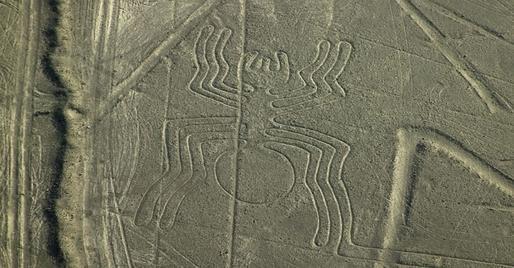 View Caption + In case you don't know what a geoglyph is, ancient Peruvians went through the trouble of leaving a picture-perfect definition. Known as the Nazca Lines, these giant carvings into the Earth were only discovered by airplane in the 1930s. Located in the Nazva desert in southern Peru around 250 miles (400 kilometers) south of Lima, the geoglyphs resemble a number of animals including a spider (as seen here), a condor, a monkey, a tree, as well as human figures and geometric patterns. Why exactly indigenous tribes living in the area between 100 B.C. and 650 A.D. felt compelled to produce these works remains a mystery, though archaeologists agree that it is likely tied to religious customs.
View Caption + In case you don't know what a geoglyph is, ancient Peruvians went through the trouble of leaving a picture-perfect definition. Known as the Nazca Lines, these giant carvings into the Earth were only discovered by airplane in the 1930s. Located in the Nazva desert in southern Peru around 250 miles (400 kilometers) south of Lima, the geoglyphs resemble a number of animals including a spider (as seen here), a condor, a monkey, a tree, as well as human figures and geometric patterns. Why exactly indigenous tribes living in the area between 100 B.C. and 650 A.D. felt compelled to produce these works remains a mystery, though archaeologists agree that it is likely tied to religious customs.
Corbis View Caption + In 1991, German tourists stumbled upon a frozen body in a glacier on the Ötztal Alps between Italy and Austria. Although they originally thought the corpse to be the result of a recent death, the iceman mummy, named Ötzi, in fact dated back 5,300 years. Since Ötzi's discovery, the mummy has been extensively studied. Scientists have learned everything from his last meal to his cause of death to his possible occupation and they have even made reconstructions of his face. Ötzi died in the spring as a result of an arrowhead striking his left clavicle artery. He likely received a ceremonial burial and was found beside tools and other personal items.
View Caption + In 1991, German tourists stumbled upon a frozen body in a glacier on the Ötztal Alps between Italy and Austria. Although they originally thought the corpse to be the result of a recent death, the iceman mummy, named Ötzi, in fact dated back 5,300 years. Since Ötzi's discovery, the mummy has been extensively studied. Scientists have learned everything from his last meal to his cause of death to his possible occupation and they have even made reconstructions of his face. Ötzi died in the spring as a result of an arrowhead striking his left clavicle artery. He likely received a ceremonial burial and was found beside tools and other personal items.
Getty Images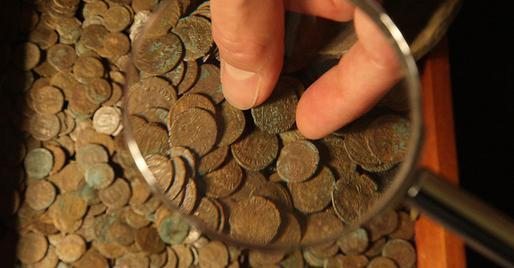 View Caption + Over the years, metal detector enthusiasts, particularly those in the United Kingdom, have uncovered archaeological treasures buried beneath the Earth. In 2009, 30-year-old Nick Davies hauled in 10,000 ancient Roman coins that he had found inside a clay pot buried in Shropshire, U.K. That same year, a trove of 1,500 gold and silver pieces dating back to the Dark Ages were found on a farmer's field in the western region of Staffordshire, England. Last year, 63-year-old David Crisp uncovered 52,000 ancient Roman coins, later given a value of around $1 million, in a clay pot in southwestern England.
View Caption + Over the years, metal detector enthusiasts, particularly those in the United Kingdom, have uncovered archaeological treasures buried beneath the Earth. In 2009, 30-year-old Nick Davies hauled in 10,000 ancient Roman coins that he had found inside a clay pot buried in Shropshire, U.K. That same year, a trove of 1,500 gold and silver pieces dating back to the Dark Ages were found on a farmer's field in the western region of Staffordshire, England. Last year, 63-year-old David Crisp uncovered 52,000 ancient Roman coins, later given a value of around $1 million, in a clay pot in southwestern England.
Getty Images An international team of researchers has discovered the remains of a Phoenician ship that sunk in the waters off the island of Malta around 700 BC, Maltese authorities announced this week.
One of the oldest shipwrecks found in the Mediterranean, the vessel is about 50 feet long. It was found at a depth of 400 feet on the sandy seabed of Gozo island, the second-largest island in the Maltese archipelago.
“There are very good chances that the wooden hull is still present, buried beneath the sand,” Timmy Gambin, a senior lecturer in maritime archaeology at the University of Malta and the co-director of the project, told Discovery News.Smuggled Cargo Found on Ancient Roman Ship
Gambin and colleagues from Texas A&M University and the French National Research Agency, found the ship’s cargo spread over a 700-square-foot area. According to Gambin, it was “in a fantastic state of preservation.”
The sandy seabed likely cushioned the impact when the ship sunk, leaving jars and ceramic containers unbroken.
According to the researchers, the ship carried a mixed cargo of jars and grinding stones.
About 20 grinding stones made from volcanic rock, each weighing as much as 75 pounds, were identified at the site.Biggest Shipwreck Finds in History
“The stones, probably coming from Sicily, were being transported to be sold elsewhere in the Mediterranean,” Gambin said.
The researchers also spotted some 50 amphorae — containers with two handles and narrow necks used to hold wine and oil — made in seven different types and sizes. This would indicate the vessel had traveled to numerous harbors before sinking.
Like other Phoenician trading vessels, the ship might have made stops in Sardinia and Malta to sell its cargo.
According to Gambin, its route might have included ports of call in southern Italy, Sicily, Malta and possibly North Africa in present day Tunisia.Roman Ship Carried Live Fish Tank
Originating from what is now Lebanon, the Phoenicians were master shipbuilders and traders who criss-crossed the Mediterranean from 1550 B.C. to 300 B.C.
Credited for developing the first alphabet, they were also the creators of a precious purple dye extracted from murex snails that was used as pigment for royal clothing.
On their trading routes, they used Maltese safe harbors as staging and anchorage posts. Indeed, Phoenician traders are believed to have been the first known inhabitants of Malta.
“The shipwreck may offer new and significant information about Phoenician seafaring and trade in the central Mediterranean during the archaic period,” Gambin said. ”To date, little is known about the earliest contact of Phoenician mariners with the Maltese islands.”PHOTOS: Accidental Archaeological Discoveries
A very high-resolution 3-D model of the site, based on more than 8,000 photographs taken of the wreck, is being funded by the French National Research Agency.
The exact location of the 2,700-year-old wreck will be kept secret until the team has finished their research.
“We have recovered some objects this year and are currently planning future seasons of work on this site,” Gambin said.
http://news.discovery.com/history/archaeology/2700-year-old-phoenician-shipwreck-discovered-140827.htm
Rossella Lorenzi

Part of the cargo of the sunken Phoenician ship. Credit: University of Malta/CNRS/COMEX

 GalleryAccidentalArchaeologicalDiscoveries:PhotosView Caption +#1: Sept. 12, 2011 -- In the search for buried history, archaeologists pour their resources into uncovering the remnants of the distant past. With know-how, persistence and a little luck, archaeologists can push aside dirt and rock and find an artifact of historical significance. Although chance plays a big role in unearthing history, archaeological treasures have been stumbled upon purely by accident, often by those outside the scientific community. In these photos, explore several particularly serendipitous finds of unique artifacts, some of which reach as far back as prehistory.
GalleryAccidentalArchaeologicalDiscoveries:PhotosView Caption +#1: Sept. 12, 2011 -- In the search for buried history, archaeologists pour their resources into uncovering the remnants of the distant past. With know-how, persistence and a little luck, archaeologists can push aside dirt and rock and find an artifact of historical significance. Although chance plays a big role in unearthing history, archaeological treasures have been stumbled upon purely by accident, often by those outside the scientific community. In these photos, explore several particularly serendipitous finds of unique artifacts, some of which reach as far back as prehistory.Getty Images
 View Caption + On Sept. 12, 1940, four teenagers followed their wayward dog into a cave complex near the village of Montignac in southwestern France. To their surprise, the caves hosted something remarkable: nearly 2,000 paintings and etchings of animals, humans and abstract shapes on the walls dating back between 15,000 and 25,000 years. Known as the Lascaux caves, the complex features figures depicted in surprising detail given the age of the illustrations. Animals portrayed on the cave walls included horses, stags, bison and felines. Archaeologists believed the caves were used for ritualistic purposes. Some parts of the illustrations even appear to construct a narrative, but what they mean exactly has yet to be deciphered. The caves were open to the public in 1948, but closed in 1963 in order to preserve the site from damage.
View Caption + On Sept. 12, 1940, four teenagers followed their wayward dog into a cave complex near the village of Montignac in southwestern France. To their surprise, the caves hosted something remarkable: nearly 2,000 paintings and etchings of animals, humans and abstract shapes on the walls dating back between 15,000 and 25,000 years. Known as the Lascaux caves, the complex features figures depicted in surprising detail given the age of the illustrations. Animals portrayed on the cave walls included horses, stags, bison and felines. Archaeologists believed the caves were used for ritualistic purposes. Some parts of the illustrations even appear to construct a narrative, but what they mean exactly has yet to be deciphered. The caves were open to the public in 1948, but closed in 1963 in order to preserve the site from damage.Corbis
 View Caption + The Dead Sea Scrolls are a collection of over 800 biblical texts made of animal skin and papyrus. Dating to around 2,000 years ago, between the years 200 B.C. and 70 A.D., the scrolls could well be the oldest such documents in existence and have deepened historians' understanding of religious history. These documents may have been lost to history had a Bedouin shepherd named Muhammed edh-Dhib and his cousin not stumbled upon the first manuscripts along the northern shore of the Dead Sea at a remote site known as Qumran in 1947. The last fragments of the Dead Sea Scrolls collection was uncovered in the mid-1950s. Although the scrolls have been extensively studied and translated, one big mystery remains: Who exactly wrote them?
View Caption + The Dead Sea Scrolls are a collection of over 800 biblical texts made of animal skin and papyrus. Dating to around 2,000 years ago, between the years 200 B.C. and 70 A.D., the scrolls could well be the oldest such documents in existence and have deepened historians' understanding of religious history. These documents may have been lost to history had a Bedouin shepherd named Muhammed edh-Dhib and his cousin not stumbled upon the first manuscripts along the northern shore of the Dead Sea at a remote site known as Qumran in 1947. The last fragments of the Dead Sea Scrolls collection was uncovered in the mid-1950s. Although the scrolls have been extensively studied and translated, one big mystery remains: Who exactly wrote them?Corbis
 View Caption + As Napoleon Bonaparte's army marched through north Africa during his campaign in Egypt, they stumbled upon what would become known as the Rosetta Stone, after the town where it was discovered. Within Bonaparte's army was a squadron of scholars called Institute of Egypt, also known as the Scientific and Artistic Commission. As the military settled around the Nile Delta, the Institute explored local ruins and artifacts. After the discovery of the stone in 1799, several copies of the inscriptions on its face were made, since no one could read them at the time. By 1802, the Greek and Demotic portions of the stone had been deciphered by scholars. The hieroglyphics posed a different challenge all together, however, and it would take 20 years before French scholar Jean-François Champollion announced that he had cracked the code. By deciphering the hieroglyphs, Champollion opened a whole new door to understanding the civilization of ancient Egypt. The Rosetta Stone is currently kept in the British Museum.
View Caption + As Napoleon Bonaparte's army marched through north Africa during his campaign in Egypt, they stumbled upon what would become known as the Rosetta Stone, after the town where it was discovered. Within Bonaparte's army was a squadron of scholars called Institute of Egypt, also known as the Scientific and Artistic Commission. As the military settled around the Nile Delta, the Institute explored local ruins and artifacts. After the discovery of the stone in 1799, several copies of the inscriptions on its face were made, since no one could read them at the time. By 1802, the Greek and Demotic portions of the stone had been deciphered by scholars. The hieroglyphics posed a different challenge all together, however, and it would take 20 years before French scholar Jean-François Champollion announced that he had cracked the code. By deciphering the hieroglyphs, Champollion opened a whole new door to understanding the civilization of ancient Egypt. The Rosetta Stone is currently kept in the British Museum.Corbis
 View Caption + In case you don't know what a geoglyph is, ancient Peruvians went through the trouble of leaving a picture-perfect definition. Known as the Nazca Lines, these giant carvings into the Earth were only discovered by airplane in the 1930s. Located in the Nazva desert in southern Peru around 250 miles (400 kilometers) south of Lima, the geoglyphs resemble a number of animals including a spider (as seen here), a condor, a monkey, a tree, as well as human figures and geometric patterns. Why exactly indigenous tribes living in the area between 100 B.C. and 650 A.D. felt compelled to produce these works remains a mystery, though archaeologists agree that it is likely tied to religious customs.
View Caption + In case you don't know what a geoglyph is, ancient Peruvians went through the trouble of leaving a picture-perfect definition. Known as the Nazca Lines, these giant carvings into the Earth were only discovered by airplane in the 1930s. Located in the Nazva desert in southern Peru around 250 miles (400 kilometers) south of Lima, the geoglyphs resemble a number of animals including a spider (as seen here), a condor, a monkey, a tree, as well as human figures and geometric patterns. Why exactly indigenous tribes living in the area between 100 B.C. and 650 A.D. felt compelled to produce these works remains a mystery, though archaeologists agree that it is likely tied to religious customs.Corbis
 View Caption + In 1991, German tourists stumbled upon a frozen body in a glacier on the Ötztal Alps between Italy and Austria. Although they originally thought the corpse to be the result of a recent death, the iceman mummy, named Ötzi, in fact dated back 5,300 years. Since Ötzi's discovery, the mummy has been extensively studied. Scientists have learned everything from his last meal to his cause of death to his possible occupation and they have even made reconstructions of his face. Ötzi died in the spring as a result of an arrowhead striking his left clavicle artery. He likely received a ceremonial burial and was found beside tools and other personal items.
View Caption + In 1991, German tourists stumbled upon a frozen body in a glacier on the Ötztal Alps between Italy and Austria. Although they originally thought the corpse to be the result of a recent death, the iceman mummy, named Ötzi, in fact dated back 5,300 years. Since Ötzi's discovery, the mummy has been extensively studied. Scientists have learned everything from his last meal to his cause of death to his possible occupation and they have even made reconstructions of his face. Ötzi died in the spring as a result of an arrowhead striking his left clavicle artery. He likely received a ceremonial burial and was found beside tools and other personal items.Getty Images
 View Caption + Over the years, metal detector enthusiasts, particularly those in the United Kingdom, have uncovered archaeological treasures buried beneath the Earth. In 2009, 30-year-old Nick Davies hauled in 10,000 ancient Roman coins that he had found inside a clay pot buried in Shropshire, U.K. That same year, a trove of 1,500 gold and silver pieces dating back to the Dark Ages were found on a farmer's field in the western region of Staffordshire, England. Last year, 63-year-old David Crisp uncovered 52,000 ancient Roman coins, later given a value of around $1 million, in a clay pot in southwestern England.
View Caption + Over the years, metal detector enthusiasts, particularly those in the United Kingdom, have uncovered archaeological treasures buried beneath the Earth. In 2009, 30-year-old Nick Davies hauled in 10,000 ancient Roman coins that he had found inside a clay pot buried in Shropshire, U.K. That same year, a trove of 1,500 gold and silver pieces dating back to the Dark Ages were found on a farmer's field in the western region of Staffordshire, England. Last year, 63-year-old David Crisp uncovered 52,000 ancient Roman coins, later given a value of around $1 million, in a clay pot in southwestern England.Getty Images An international team of researchers has discovered the remains of a Phoenician ship that sunk in the waters off the island of Malta around 700 BC, Maltese authorities announced this week.
One of the oldest shipwrecks found in the Mediterranean, the vessel is about 50 feet long. It was found at a depth of 400 feet on the sandy seabed of Gozo island, the second-largest island in the Maltese archipelago.
“There are very good chances that the wooden hull is still present, buried beneath the sand,” Timmy Gambin, a senior lecturer in maritime archaeology at the University of Malta and the co-director of the project, told Discovery News.Smuggled Cargo Found on Ancient Roman Ship
Gambin and colleagues from Texas A&M University and the French National Research Agency, found the ship’s cargo spread over a 700-square-foot area. According to Gambin, it was “in a fantastic state of preservation.”
The sandy seabed likely cushioned the impact when the ship sunk, leaving jars and ceramic containers unbroken.
According to the researchers, the ship carried a mixed cargo of jars and grinding stones.
About 20 grinding stones made from volcanic rock, each weighing as much as 75 pounds, were identified at the site.Biggest Shipwreck Finds in History
“The stones, probably coming from Sicily, were being transported to be sold elsewhere in the Mediterranean,” Gambin said.
The researchers also spotted some 50 amphorae — containers with two handles and narrow necks used to hold wine and oil — made in seven different types and sizes. This would indicate the vessel had traveled to numerous harbors before sinking.
Like other Phoenician trading vessels, the ship might have made stops in Sardinia and Malta to sell its cargo.
According to Gambin, its route might have included ports of call in southern Italy, Sicily, Malta and possibly North Africa in present day Tunisia.Roman Ship Carried Live Fish Tank
Originating from what is now Lebanon, the Phoenicians were master shipbuilders and traders who criss-crossed the Mediterranean from 1550 B.C. to 300 B.C.
Credited for developing the first alphabet, they were also the creators of a precious purple dye extracted from murex snails that was used as pigment for royal clothing.
On their trading routes, they used Maltese safe harbors as staging and anchorage posts. Indeed, Phoenician traders are believed to have been the first known inhabitants of Malta.
“The shipwreck may offer new and significant information about Phoenician seafaring and trade in the central Mediterranean during the archaic period,” Gambin said. ”To date, little is known about the earliest contact of Phoenician mariners with the Maltese islands.”PHOTOS: Accidental Archaeological Discoveries
A very high-resolution 3-D model of the site, based on more than 8,000 photographs taken of the wreck, is being funded by the French National Research Agency.
The exact location of the 2,700-year-old wreck will be kept secret until the team has finished their research.
“We have recovered some objects this year and are currently planning future seasons of work on this site,” Gambin said.
http://news.discovery.com/history/archaeology/2700-year-old-phoenician-shipwreck-discovered-140827.htm

Published on August 31, 2014 15:00
Unique 2000-Year-Old Wooden Toilet Seat Found
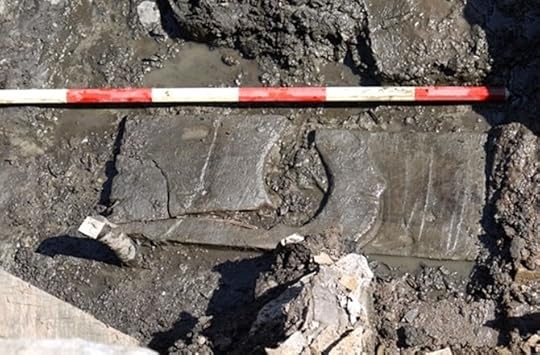 by Rossella Lorenzi
by Rossella Lorenzi Archaeologists excavating a Roman fort in northern England have unearthed a 2,000-year-old wooden toilet seat — the only find of its kind to have survived.
The seat was found in a muddy trench at the Roman fort of Vindolanda, which was a key military post on the northern frontier of Britain before the building of Hadrian’s Wall. It had clearly been well used by soldiers stationing there.
Decommissioned from its original purpose, it was then dumped amongst other rubbish before the construction of Hadrian’s Wall started in the early second century.
“We know a lot about Roman toilets from previous excavations at the site and from the wider Roman world, which have included many fabulous Roman latrines, but never before have we had the pleasure of seeing a surviving and perfectly preserved wooden seat,” Andrew Birley, director of excavations at Vindolanda, said.
Medieval Poop Found: Still Stinks
The wooden seat has been perfectly preserved in the anaerobic, oxygen-free conditions that exist at Vindolanda.
“It is made from a very well-worked piece of wood and looks pretty comfortable,” Birley said.
Indeed, given the cold climate, the seat would have worked much better than the well-known Roman marble or stone toilet benches.
“Now we need to find the toilet that went with it as Roman loos are fascinating places to excavate — their drains often contain astonishing artifacts,” Birley added.
Discoveries from latrines at Vindolanda have included a baby boot, coins, a betrothal medallion and a bronze lamp.
Ancient Pompeians Could Go Upstairs to Pee
Excavated for decades by the Birley family, Vindolanda has yielded a variety of findings, ranging from worn shoes and socks to jewelry, gold coins and unique objects such as a gladiator's drinking glass.
Vindolanda’s most famous finds, however, are some 400 wooden writing tablets inscribed with official and private correspondences. About the size of a modern postcard, these are the oldest surviving handwritten documents in Britain and provide a unique insight into life at the Roman fort.
Once preservation of the wooden seat is complete — the process might take up to 18 months — the artifact will be put on display at the Vindolanda Roman Army Museum, located near the modern village of Bardon Mill.
Ancient Toilet Reveals Parasites in Crusader Poop
According to a statement by the Vindolanda Trust, archaeologists now need to find a spongia — the natural sponge on a stick that Romans used instead of toilet paper.
“With over 100 years of archaeology remaining and the unique conditions for the preservation of such organic finds, a discovery may just be possible,” the statement concluded.
Image: The 2000-year-old wooden toilet seat excavated from a muddy trench. Credit: Vindolanda Trust.
http://news.discovery.com/history/archaeology/unique-2000-year-old-wooden-toilet-seat-found-140828.htm

Published on August 31, 2014 14:54
Scribbler Tales by Mary Ann Bernal available for pre-order

“Scribbler Tales is a unique mix of genres in one anthology rich with tension, humanity and genuine emotion. Unconventional settings and unexpected twists are bound to leave you pondering long after you close this book.”
In “Desperate Measures,” you will learn of human cloning experiments gone awry. “Forbidden Lore” beckons Arianna and Ethan into a haunted cemetery where you will discover how they survive the night. Star-crossed lovers who refuse to accept the inevitable rise to a surprise ending in “Forever Lost.” In “The Hourglass,” the weakness of human character is exposed when Flair makes a covenant with the Devil. “Sail with Me” is a slice of life read about the confessions of a military brat who changes his life against all the odds.
Amazon Link:http://www.amazon.com/Scribbler-Tales-One-Mary-Bernal-ebook/dp/B00N6A462E/ref=sr_1_1?ie=UTF8&qid=1409489310&sr=8-1&keywords=Scribbler+Tales

Published on August 31, 2014 05:50
History Trivia - Macedonian dynasty ends with the death of Byzantine Empress Theodora
August 31

12 Caligula, Emperor of Rome 37-41, was born. He was noted for his insanity and cruelty.

161 Commodus, Emperor of Rome 180-192 was born.

651 St. Aidan died. A monk at Iona, Scotland, Aidan became the first bishop of Lindisfarne.
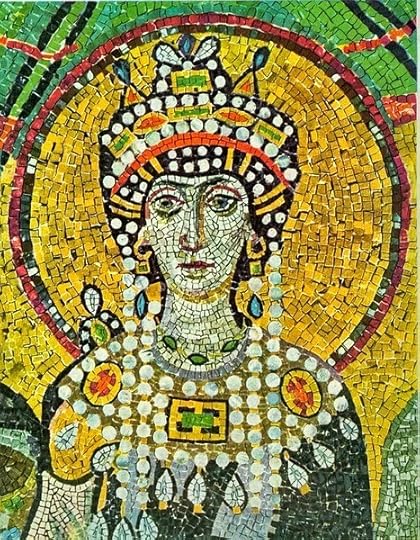
1056 Byzantine Empress Theodora became ill and died suddenly a few days later without children to succeed the throne, thus ending the Macedonian dynasty.
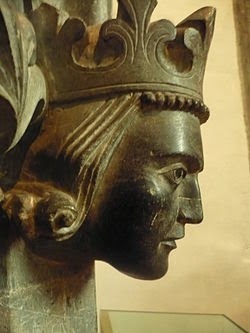
1314 King Håkon V Magnusson moved the capital of Norway from Bergen to Oslo.

1422 King Henry V of England died of dysentery while in France.

1422 Henry VI became King of England at the age of 9 months.

1535 Pope Paul II deposed and excommunicated King Henry VIII.


12 Caligula, Emperor of Rome 37-41, was born. He was noted for his insanity and cruelty.

161 Commodus, Emperor of Rome 180-192 was born.

651 St. Aidan died. A monk at Iona, Scotland, Aidan became the first bishop of Lindisfarne.

1056 Byzantine Empress Theodora became ill and died suddenly a few days later without children to succeed the throne, thus ending the Macedonian dynasty.

1314 King Håkon V Magnusson moved the capital of Norway from Bergen to Oslo.

1422 King Henry V of England died of dysentery while in France.

1422 Henry VI became King of England at the age of 9 months.

1535 Pope Paul II deposed and excommunicated King Henry VIII.

Published on August 31, 2014 05:00
August 30, 2014
Mr. Chuckles tips over the Wizard's Cauldron meeting 100th interview special edition: Star US chickliterati, Katie Oliver
 The Wizard speaks:
The Wizard speaks:For followers of the Wizard's Cauldron, Katie Oliver needs no introduction. Most people's odds-on favourite for global romance superstardom, Katie has been writing stories ever since she was old enough to hold a pencil.
With her star currently shining brightly in our corner of the literary firmament, I thought of no-one more appropriate than Katie to be our 100th interview.
A big fan of the old Fred Astaire and Ginger Rogers romances and later, the Stephen Curtis chickflicks "Four Weddings" and "Notting Hill", Katie is known for her light touch, effervescent humour and gentle observations of the "battle of the sexes".
As a prolific writer, Katie also is fond of long term character development, so you really get a sense of the creation of a literary world.
I'm a big fan of the way she does business and am wishing her to the top. I picked up the Wizphone and caught up with Katie in her garden somewhere on the Eastern Seaboard. Here's what she had to say to me.
Read more at:
http://greenwizard62.blogspot.co.uk/2014/08/the-wizards-cauldron-100th-interview.html

Published on August 30, 2014 14:52
Audio Book Launch - The Briton and the Dane by Mary Ann Bernal, narrated by Sebastian Lockwood

Written by: Mary Ann Bernal Narrated by: Sebastian Lockwood Length: 11 hrs and 30 mins Unabridged Audiobook
King Alfred the Great has thwarted the Viking threat against his kingdom of Wessex. Signing a treaty with the formidable Danish King Guthrum, he succeeds in pushing the heathen army back to the rolling fens of East Anglia.
An uneasy peace holds sway: The King establishes a standing army under Lord Richard, who takes command of the citadel at Wareham.
Richard and his army are accompanied by his daughter, Gwyneth, an impetuous and reckless young woman - at once striking, intellectually gifted, but dangerously vain and imprudent.
While Richard broods on the Viking threat, Gwyneth falls in love with an enemy prince - only to discover that she has been betrothed to a Saxon warrior twice her age.
Refusing to countenance her grim fate, she flees the fortress, but is soon kidnapped by a Viking warrior and taken to the camp of King Guthrum while Saxon search parties scour the land.
In captivity, a hostage to fortune, and the focus of political intrigue, Gwyneth is submerged in a world of expediency, betrayal, and black treachery. Slowly, she realizes the truth is suspect, nothing is what it appears and her reality cannot be trusted.
And all the time, against this background, she desires nothing more than to be reunited with her dashing Danish prince.
Audible:
http://www.audible.com/pd/Teens/The-Briton-and-the-Dane-Second-Edition-Audiobook/B00MV8J7HQ/

Published on August 30, 2014 11:53



